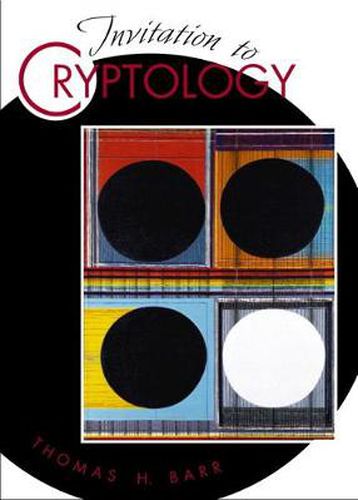Readings Newsletter
Become a Readings Member to make your shopping experience even easier.
Sign in or sign up for free!
You’re not far away from qualifying for FREE standard shipping within Australia
You’ve qualified for FREE standard shipping within Australia
The cart is loading…






Designed for a one-semester undergraduate-level course in cryptology, mathematics, or computer science, this text is aimed at the newcomer to the subject. It introduces a wide range of up-to-date cryptological concepts along with the mathematical ideas that are behind them. A variety mathematical topics that are germane to cryptology (for example, modular arithmetic, Boolean functions, complexity theory, and so forth) are developed, but they do not overshadow the main focus of the text. The book brings students directly to concepts of classical substitutions and transpositions and issues in modern cryptographic methods, and includes discussions of both classical and modern cryptology. The text includes a historical sketch of cryptology, guided by mathematical themes and advents of innovations. Cryptanalysis and polyalphabetic substitutions are presented in graphical and numerical form and the student is encouraged to move away from purely pencil-and-paper based cryptanalysis and polyalphabetic ciphers towards computer-manipulated data so they can break keyword polyalphabetic substitutions. Case studies on specific encryption algorithms are presented along with discussions of technical issues and public policy, while students are allowed to draw connections with their experience using the Internet and other forms of telecommunication. A wide-range of material is covered - more than enough for a one-semester course. Instructors are given the freedom to choose the topics they want to cover without having to rely on ancillary materials.
$9.00 standard shipping within Australia
FREE standard shipping within Australia for orders over $100.00
Express & International shipping calculated at checkout
Designed for a one-semester undergraduate-level course in cryptology, mathematics, or computer science, this text is aimed at the newcomer to the subject. It introduces a wide range of up-to-date cryptological concepts along with the mathematical ideas that are behind them. A variety mathematical topics that are germane to cryptology (for example, modular arithmetic, Boolean functions, complexity theory, and so forth) are developed, but they do not overshadow the main focus of the text. The book brings students directly to concepts of classical substitutions and transpositions and issues in modern cryptographic methods, and includes discussions of both classical and modern cryptology. The text includes a historical sketch of cryptology, guided by mathematical themes and advents of innovations. Cryptanalysis and polyalphabetic substitutions are presented in graphical and numerical form and the student is encouraged to move away from purely pencil-and-paper based cryptanalysis and polyalphabetic ciphers towards computer-manipulated data so they can break keyword polyalphabetic substitutions. Case studies on specific encryption algorithms are presented along with discussions of technical issues and public policy, while students are allowed to draw connections with their experience using the Internet and other forms of telecommunication. A wide-range of material is covered - more than enough for a one-semester course. Instructors are given the freedom to choose the topics they want to cover without having to rely on ancillary materials.